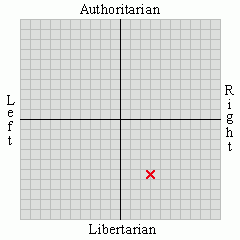Specifically, an automaker like GM or Ford is not very good at making or selling compact or subcompact cars, while it might be better at light-duty trucks (which are still quite profitable) or mid-size to large passenger sedans (which seem to have at least retained market share) and luxury cars (which have high profit margins). But the CAFE standard requires that the entire fleet of vehicles manufactured by a particular company exceed a certain average estimated MPG figure. But a purer form of capitalism wouldn't have CAFE standards, and the automakers would over time specialize in the kinds of vehicles that they were best at making and selling.
So it was with some interest that I see this great insight by bobvis as to the right way to look at a vehicle's MPG and its environmental impact. CAFE standards, after all, are supposed to be about promoting fuel efficiency and reducing exhaust output into the atmosphere. In campaign-speak, they're about Cleaner, Healthier Air and Reducing Our Dangerous Addiction To Foreign Oil. (RODATFO for short.)
But if the policy goals are to reduce exhaust and reduce gasoline consumption, simple math tells us that what would really count most would be reducing the most inefficient vehicles from the road, even if they are replaced with what seem like only moderately more inefficient vehicles. Bob compares two switches -- first if you take an SUV that gets 12 MPG off the road and replace it with a slightly-more-efficient model that gets 14 MPG, and second if you take a compact car that gets 36 MPG and replace it with its hybrid model that gets 45 MPG. Which switch is better for the environment and RODATFO? The first switch reduces gasoline consumption by twice as much as the second:
...Let's say that Durango would be driven 100,000 miles. The non-hybrid [12 MPG] would use 8,333 gallons. The hybrid [14 MPG] would use only 7143. You would save 1190 gallons. [¶] Compare that to the Civic. The automatic gets 36 mpg highway. That would use 2777 gallons. The 45 mpg hybrid would use 2222 gallons. You would save only 555 gallons.As with all really useful insights, it's quite obvious in retrospect and if you're like me (and I know I am), you'll wonder why you didn't think of this yourself. It's just basic multiplication and division; any sixth-grader armed with a pocket calculator could have figured this out. Yet a legion of adults -- alleged policy experts as well as the politicians who market and implement their ideas -- seem to have ignored this and, under the banner of RODATFO, made this the law of the land.
Bob concludes his thought by suggesting that this is evidence that policymakers do not know what they are doing. Now, I assume that proposition as a basic postulate of governmental analysis, but let's pause for just a moment here -- perhaps the real policy objective is not to RODATFO, but rather to do two other things -- 1) encourage U.S. automakers to develop high-efficiency technology, and 2) to make highly-efficient vehicles available on the market for those consumers who wish to buy them. It seems to me that the CAFE standards have significantly achieved that goal. All Big Three automakers have invested substantial resources into developing hybrid, all-electric, or at least highly-efficient models of various vehicles. That goal -- creating American-manufactured high-efficiency vehicles -- is a defensible policy objective, although we should note that it is not (directly) related to the political reasons used to justify CAFE standards.
Relating this insight back to the original question -- why have the Big Three failed and what should be done about that -- the question becomes, are CAFE standards a significant factor in their failure? Seems to me that the correct answer to that question is "not all that much." Particularly during the oil crunch, the market demand for highly-efficient vehicles was very high, and Detroit just plain didn't have a lot to offer. Oil is cheaper again, although I'm of a mixed opinion about whether that is really a good thing (except when I personally am filling up my car). But the demand for highly-efficient vehicles certainly hasn't gone away. Nor has the demand for larger vehicles like SUV's.
More importantly, the legacy costs of running operations like GM and Ford also haven't gone away. The actual cost of labor -- which includes not only wages but also benefits, taxes, and pro-rated training -- is over $100 an hour at some GM plants. If the true cost of labor here were only half again what Japanese or German cars cost, then the pricing of the "American" vehicles combined with the tariffs put on the "Foreign" cars would protect and lock in huge market shares for the Big Three.
I put "American" and "Foreign" in quotation marks, though, because so many of these cars are assembled, and a lot of their component parts are manufactured, within the NAFTA countries. Toyota, for instance, has one of its primary assembly plants for vehicles destined to be sold in the U.S. just south of Nashville, Tennessee. A car built using components made in California and Utah, shipped on the Union Pacific Railroad to Tennessee, and built with the labor of U.S. citizens, in some senses should not be called "Japanese." Did Toyota set things up that way to avoid tariffs? Hell, yes, and that's kind of why the tariffs were put in place to begin with.
Regardless, whether CAFE standards, legacy costs, bad marketing, poor service records, or management not up to the admittedly challenging task of steering these ships through the troubled waters of the economy is to blame, all of these problems can and should be addressed comprehensively in a bankruptcy court.







No comments:
Post a Comment